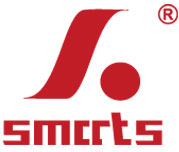The regulated power supply is a built-in circuit. With the help of a rectifier, the AC(alternating current) is transformed to DC(direct current). It has the ability to provide a regulated voltage (or lower frequency current) for circuits or devices that must operate within a certain power limit. The output of the regulated power supply is either AC or unidirectional, but is almost always DC (DC). In order to ensure that the output remains within certain limits under various load conditions or to compensate for fluctuations in its own source of fluctuations, the type of stability used may be limited. So most of what we use today is DC.
The regulated power supplies are used in many applications to maintain a stable voltage source, especially for electronic circuits. It is well known that electronic circuits are sensitive to the magnitude of the line voltage, and fluctuations in the line voltage cause the output signal of the circuit to fluctuate. For example, interference is generated in the output signal of an electronic circuit for biometrics, which may lead to misdiagnosis of human diseases. Of course, there are many situations in which fluctuations in signal measurement caused by disturbances in line voltage can have detrimental effects.
The regulated power supply uses two independent power supplies connected in series by variable impedance components. For example, a transistor connected between two led power sources. The output voltage of led driver power supply is equal to the sum of the individual supply voltages minus the voltage drop across the variable impedance component. A sensor circuit using a standby mode branch and an active mode branch is coupled between the output terminals of the power supply to control the variable impedance element. The active branch of the sensor is switchably connected to the output power terminal of the power supply to operate only during the active mode. Both the resistor network of the alternate branch and the feedback amplifier of the active branch are coupled to a reference diode.

More information if you would like to know Smarts Electronics’s led power supply, please login https://www.smarts-electronics.com/ Or contact with Mr. Steven(skype: steven821228 mail:sales1@smartselectronics.com)



















